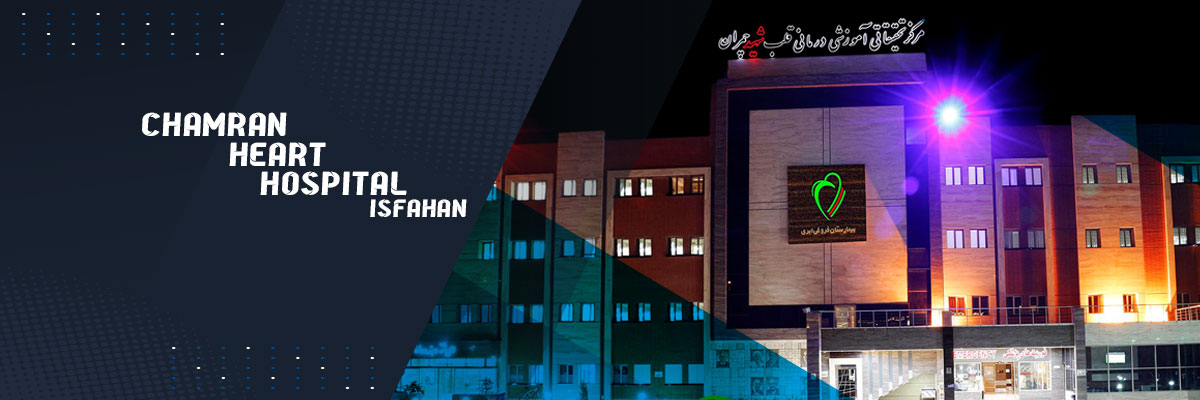
Hospital’s History
Shahid Chamran Specialize Center of Cardiovascular Diseases is located on the Eastern side of city of Isfahan, 5 Km away from Bozorgmehr bridge in Salman-e-Farsi (3rd Moshtagh) avenue on the banks of Zayandeh-Roud river.
This center covers an expanse of 11 hectares, donated by a philanthropist named Mr. Haj Abbas Foroughi Abari in year 1968. The first buildings in this complex as a hospital for tuberculous patients in three blocks and 3 floors and one administrative block with total area of 5000 square meters including were constructed shortly after by the Ministry of Health of that time.
This complex became operational on July 1966 for providing services to tuberculous patients and after the decision by ministry of health on 1976 regarding lack of separation between tuberculous patients and other patients after the start of treatment, along with the general medicine ward, the initial center of heart surgery was started by two specialized heart surgeons including Dr. Mohammadali Nafisi from Iran and Dr. Lazman from United States as well as two interns including Dr. Ismaeil Nourmohammadi and Dr. Gholamreza Behdadfar. In 1983, due to the large number of burn patients as a result of Iran – Iran war and lack of specialized burn treatment centers, the burn ward was also added to which center which covered patients including war victims as well as patients from southern and south western regions of Iran. In the year 1985 and with the start of Dr. Masoud Pourmoghadas’ tenure as the president of Chamran educational and treatment center, rapid changes were made to turn this center into a comprehensive center for treatment of cardiovascular diseases.
Due to changes made in this period, the burn treatment ward was transferred to Imam Mousa Kazim Accidents and Burn Hospital in 1989, after which old buildings were rebuilt and converted to new heart surgery and specialized cardiovascular wards.
The well-equipped angiography ward was contracted in 1991 under the same management until in year 2016, the management of the Chamran educational and treatment center was transferred to the new president, Dr. Gholamreza Masoumi, a Cardiovascular subspecialist, and with studies in interventional cardiology from University of London, who is currently the head of angiography ward Chamran educational and treatment center, a member of Islamic Republic of Iran’s Academy of Sciences, and a member of supervising board of Isfahan University of Medical Sciences. His previous appointments include educational deputy of Isfahan University of Medical Sciences, Head of Department of Medicine and President of Ali Asghar Hospital.
This center currently operates with 224 active beds with average occupation rate of 82.24% and average hospitalization duration of 4.13 days with all necessary specializations and equipment for treatment of cardiovascular diseases.
Hospital’s Mission Statement
We believe that we are responsible for patients, staff members and all individuals using our services; therefore, the main mission of Shahid Chamran Cardiovascular Education, Treatment and Research Center is to provide the best possible efforts in promoting and improving the education, research, prevention, treatment, care and rehabilitation and improvement of cardiovascular conditions using the highest standards provided by Ministry of Health, Treatment and Medical Education and up to date technologies. We use the scientific expertise of specialized physicians and other medical staff and provide motivation for current employees while aiming to hire qualified new talents and provide them with sufficient job security through systematic human resource management system in order to provide the best possible care for our patients.
This center aims for constant quality improvement, establishment of a clinical management system and providing the best possible services with emphasis on patient-center care and patient safety and improved patient satisfaction for all patients in Isfahan province, other provinces and in the Middle East Region.
- Constant improvement of quality of hospital services;
- Development of hospitalization wards and improving the quantity of services provided in clinical and paraclinical wards based on the needs of local population;
- Reduction of risks and possible dangers to patients through creation and implementation of patient safety guidelines;
- Increased customer satisfaction;
- Increased employee satisfaction;
- Optimal use of resources and satisfying the trust placed on the management by the financial backers;
- Employing skilled human resources and employee development using educational facilities and reeducation methods;
